
Following updates to ALTA’s Best Practices earlier this year, Pillar 3 requires that title & escrow companies “[a]dopt and maintain a written information security plan (“WISP”) and a written privacy plan to protect NPI as required by local, state, and federal law.” While this is certainly sage guidance for an industry heavily targeted by fraudsters looking to access nonpublic information (NPI) to commit wire fraud, many companies are at a loss as to where to begin when creating a new security plan or updating existing documentation.
Qualia’s Information Security team has put together guidance to assist companies in creating an ALTA Best Practices Pillar 3 compliant WISP. At Qualia, we understand the importance of data security; our own WISP is audited annually by an outside firm of accredited auditors as part of our ISO 27001 certification and SOC 2 Type II assessment process. We believe every company can develop an effective security plan with the right information.
A Quick Note About This Guide
We have designed this guide to provide suggestions for title and escrow companies looking to create their own WISP based on current industry best practices and expert strategy guidance. Since each business is unique, it is not meant to function as a copy and paste substitute solution for creating robust security documentation. Every title and escrow company should curate their WISP to their specific business practices and risk appetite.
Once you have become familiar with what is needed and are seeking specific templates, there are a few additional resources that can help. The SANS Institute offers additional resources and template policies to aid in the creation of security documentation. Note that these policies are not specific to the real estate industry, and are often stricter than necessary. However, they can provide a helpful start for title and escrow companies looking to implement updated security practices. We also recommend reviewing the latest tools and information offered by ALTA.What is a WISP and why do you need one?
A WISP is a document that outlines a company’s strategies for protecting sensitive information. Several policies and procedures comprise a WISP, which together define and document what it means to do business securely. For example, it should include policies that govern the way that computing resources may be utilized, the way access to customer data is managed, with which third parties customer data may be shared, and the manner in which the company prepares for and responds to disasters.
A comprehensive WISP is necessary to doing business for several reasons:
- Protection of nonpublic information (NPI): A WISP helps identify and safeguard sensitive assets such as customer data, financial information, and employee records. It establishes measures to prevent unauthorized access, disclosure, alteration, or destruction of this information.
- Regulatory compliance: ALTA Best Practices Pillar 3 recommends the implementation of a WISP. Compliance with this requirement demonstrates a commitment to safeguarding NPI collected during the closing process.
- Risk assessment: A WISP helps to identify and mitigate potential risks and vulnerabilities in a title company’s information systems. Conducting a comprehensive risk assessment can help to proactively address security gaps and protect NPI.
- Business continuity: A WISP includes measures to ensure the continuity of critical business operations during security incidents or disruptions. It covers backup and recovery processes, disaster recovery plans, and incident response protocols to minimize downtime and financial loss.
- Employee awareness and training: A WISP educates employees about their roles and responsibilities in maintaining information security to help promote a security-conscious culture. It establishes guidelines for acceptable use of technology, password management, data handling, and reporting security incidents.
- Building customer trust: In an era of heightened data privacy concerns, a comprehensive WISP demonstrates a commitment to protecting customer data. Customers are more likely to choose companies that prioritize security, fostering trust and loyalty.
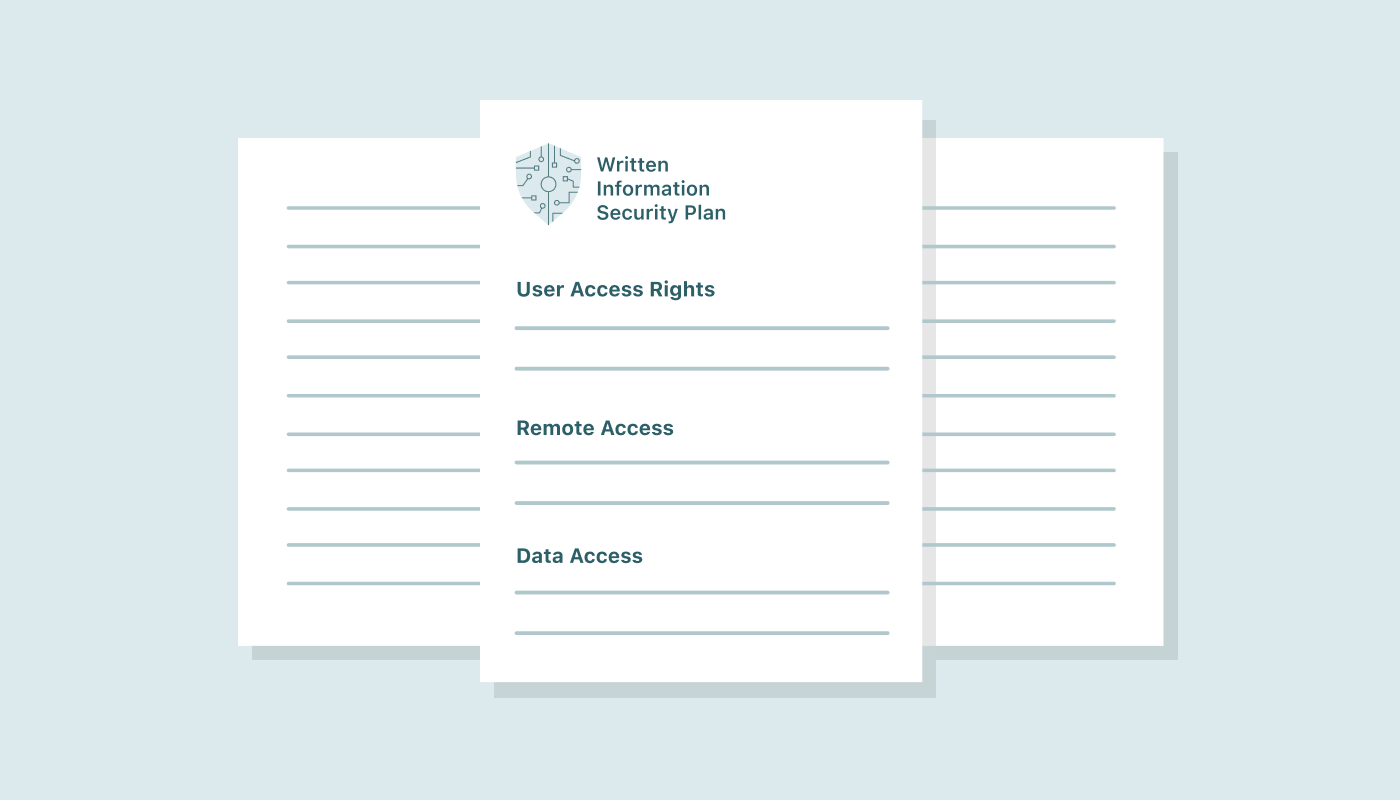
How to Create a WISP
As mentioned above, a WISP comprises several security policies and procedures. In this section, we will break these down and discuss what should be included within each document to ensure operational security across all facets of the business.
Access Control and Acceptable Use Policy
Purpose
This policy aims to establish guidelines and procedures for the access, use, and protection of a company’s information systems, networks, and resources. It helps ensure the security and availability of data and mitigate the risks associated with unauthorized access, misuse, or abuse of company resources.
Scope
This policy applies to all employees, contractors, consultants, and authorized users who access or use the title company's information systems, networks, and resources, regardless of location.
Contents
This policy should include protocols around the following:
User access rights
User identification and authentication
All users must have a unique user identification (ID) and adhere to strong password requirements. Multi-factor authentication (MFA) will be enforced for accessing sensitive systems and data.
User account management
User account creation, modification, and removal should follow defined procedures. Access privileges will be granted based on job requirements, and access permissions will be reviewed regularly.
Least privilege
Users will be granted only the minimum necessary access rights to perform their job functions.
Remote access
Secure remote access
Remote access to the company’s systems and networks should be authorized and protected through secure Virtual Private Network (VPN) connections or other approved methods. Remote access users must adhere to the same security policies and controls as on-site users.
Mobile device usage
Users accessing company resources through mobile devices must comply with the Mobile Device Security Policy, which includes password protection, encryption, and remote wipe capabilities.
Data access
Data classification
Data should be categorized based on its sensitivity and criticality. Access to data should be restricted to authorized individuals with a legitimate business need.
Data handling and protection
Users should follow defined procedures for handling, storing, transmitting, and disposing of data. Encryption mechanisms should be employed when deemed necessary to protect sensitive information.
Acceptable use
Lawful and ethical use
All users must use the company’s information systems, networks, and resources in a lawful, ethical, and responsible manner. Users should comply with applicable laws, regulations, and internal policies.
Email usage
Users should use company-provided email accounts for business purposes only.
Internet usage
Internet access is provided for business-related activities. Users must not engage in internet usage that may compromise network security.
Enforcement
Compliance monitoring
The company reserves the right to monitor, log, and review user activities on its information systems, networks, and resources.
Incident reporting and response
Incident reporting
All security incidents, including breaches, thefts, or unauthorized access, should be reported immediately to the designated responsible parties within the title company.
Incident response
A documented incident response plan should be in place to guide employees on how to respond to security incidents promptly. The plan should include procedures for containment, investigation, communication, and recovery.
Lessons learned
After resolving a security incident, a thorough investigation should be conducted to identify root causes, implement corrective actions, and learn from the incident to prevent future occurrences.

Physical Security Procedures
Purpose
Physical security refers to matters related to a company’s office space. Procedures regarding physical security should consider access to offices and server rooms, inventory management, asset tracking, and document retention and disposal policies to protect physical assets.
Scope
This policy applies to all employees, contractors, consultants, and authorized users who access the title company's physical office spaces and servers.
Contents
Physical security protocols should address the following:
Access control
Restricted access areas
Access to sensitive areas, including offices, server rooms, document storage areas, and data centers, should be restricted to authorized personnel only.
Visitor access
Visitors must sign in, provide valid identification, and be escorted at all times while on the premises. Visitor access should be limited to designated areas and revoked upon departure.
Employee identification badges
All employees should be issued and required to wear identification badges prominently displayed while on company premises. Lost or stolen badges must be reported immediately.
Physical access security
Locking Mechanisms
All entry points, including doors, windows, and other openings, should be equipped with secure locking mechanisms, such as deadbolts, access control systems, or electronic locks.
Intrusion detection systems
Alarm systems should be installed to detect unauthorized access attempts. Alarms should be tested regularly and promptly repaired in case of malfunctions.
Alarm monitoring
Alarm systems should be connected to a central monitoring station or a designated responsible party who will receive alerts and take appropriate actions.
Key issuance
Keys should be issued only to authorized personnel and should be properly recorded. Each keyholder should sign an agreement acknowledging their responsibility for the keys.
Key storage
Keys should be stored securely in designated key cabinets or locked drawers when not in use. Key access should be restricted to authorized personnel.
Lost or stolen keys
Lost or stolen keys must be reported immediately. An investigation should be conducted, and locks may be changed or rekeyed as necessary.
Acceptable use
Lawful and ethical use
All users must use the company’s information systems, networks, and resources in a lawful, ethical, and responsible manner. Users should comply with applicable laws, regulations, and internal policies.
Email usage
Users should use company-provided email accounts for business purposes only.
Internet usage
Internet access is provided for business-related activities. Users must not engage in internet usage that may compromise network security.
Enforcement
Compliance monitoring
The company reserves the right to monitor, log, and review user activities on its information systems, networks, and resources.
Incident reporting and response
Incident reporting
All security incidents, including breaches, thefts, or unauthorized access, should be reported immediately to the designated responsible parties within the title company.
Incident response
A documented incident response plan should be in place to guide employees on how to respond to security incidents promptly. The plan should include procedures for containment, investigation, communication, and recovery.
Lessons learned
After resolving a security incident, a thorough investigation should be conducted to identify root causes, implement corrective actions, and learn from the incident to prevent future occurrences.
Inventory management and asset tracking
Equipment and asset register
An inventory management system should be implemented to track all company-owned equipment, including computers, servers, laptops, and mobile devices. The register should include information such as make, model, serial numbers, and assigned employees.
Asset protection
Physical security measures, such as cable locks, lockable cabinets, and secure storage areas, should be implemented to protect valuable assets from theft or unauthorized access.
Equipment disposal
Procedures for proper disposal of equipment should be established to prevent data breaches. Data-containing devices should be securely wiped or destroyed following industry-recognized standards.
Document retention and disposal
Document classification
Documents should be categorized based on their sensitivity and confidentiality. Access to classified documents should be restricted to authorized personnel only.
Secure storage
Sensitive documents should be stored in locked cabinets or rooms with limited access. Additional security measures, such as video surveillance, may be implemented as deemed necessary.
Document disposal
Procedures for document disposal, including shredding or secure destruction, should be implemented to prevent unauthorized access or information leakage. A designated individual or service provider should handle document disposal.
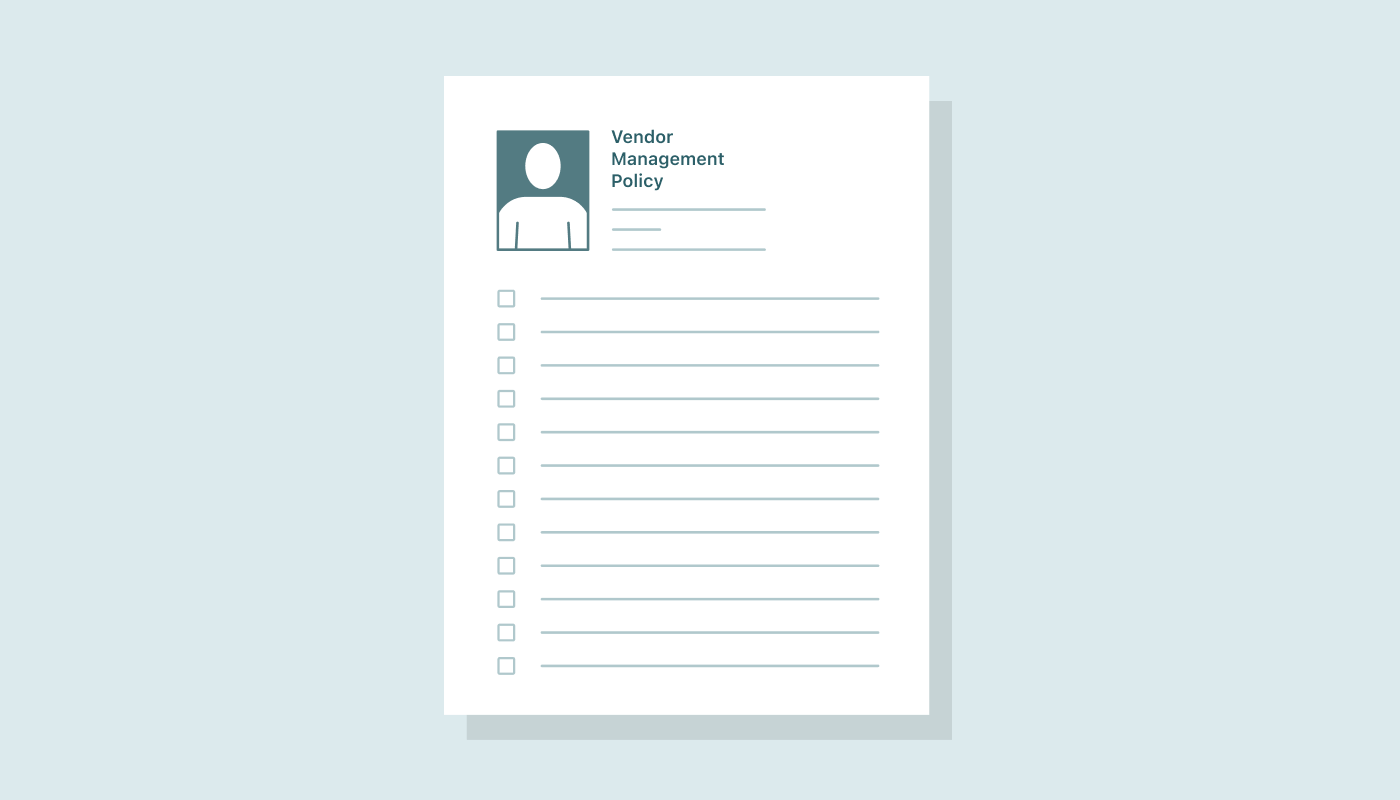
Vendor Management Policy
Purpose
A vendor management policy establishes guidelines and procedures for the selection, oversight, and ongoing management of vendors. It aims to ensure a vendor’s compliance with local laws and requirements and ensure that a vendor has the necessary security measures in place to protect NPI in alignment with a title company’s own security policies.
Scope
This policy applies to all vendors, contractors, consultants, and third-party service providers that have access to the title company's systems, data, or facilities, regardless of their location.
Contents
A vendor management policy considers:
Vendor due diligence
Vendor risk assessment
A risk assessment should be conducted to evaluate the potential impact of a vendor on the title company’s information security. Factors to consider during this assessment include: the sensitivity of data they will handle, their security practices, reputation, financial stability, and regulatory compliance.
Vendor security requirements
Vendors must meet the minimum security requirements as defined by the title company. This includes implementing appropriate safeguards to protect data, maintaining security incident response capabilities, and complying with relevant laws and regulations.
Contractual requirements
Data protection and confidentiality
Vendor contracts should include provisions ensuring the protection of the title company's data and maintaining its confidentiality. This includes restrictions on data use, disclosure, and retention, as well as requirements for secure data handling and proper disposal.
Compliance and auditing
Vendors should be contractually obligated to comply with applicable laws, regulations, and industry standards. Access and audit rights should be granted to the title company to assess and verify the vendor's compliance with security requirements.
Subcontractor management
Vendors should notify the title company of any subcontractors involved in delivering services. Subcontractors must meet the same security and compliance standards as the primary vendor, and appropriate contractual provisions should be in place to ensure their adherence.
Vendor performance monitoring
Security reviews and audits
Periodic security reviews and audits should be conducted to assess the vendor's ongoing compliance with security requirements. This may include reviewing their policies, procedures, security incident response capabilities, and conducting on-site assessments if necessary.
Incident reporting
Vendors should promptly report any security incidents or breaches that may impact the title company's data or systems. The incident reporting process and timeline should be specified in the vendor contract.
Vendor performance evaluation
The vendor’s performance should be regularly evaluated based on defined metrics and criteria. Feedback and concerns should be documented and addressed with the vendor to drive improvement and maintain a productive working relationship.
Contract renewal and termination
Vendor contracts should have defined renewal and termination provisions. Contracts should be reviewed and renewed based on the vendor's continued adherence to security requirements. Non-compliance or repeated incidents may result in contract termination.
Documentation and recordkeeping
Vendor documentation
All vendor-related documentation, including contracts, questionnaires, audit reports, and correspondence, should be properly maintained and accessible for review.
Incident tracking
Incidents involving vendors, including breaches, compromises, or unauthorized access, should be documented, investigated, and appropriately resolved. Lessons learned from incidents should be recorded for continuous improvement.
Employee education
Employees involved in vendor management processes should receive appropriate training on vendor selection, security requirements, contract management, and ongoing monitoring to ensure consistent adherence to this policy.
Vendor communication
Clear communication channels should be established with vendors to provide them with relevant security guidelines, updates, and ensure their understanding of their responsibilities in safeguarding the title company's data.
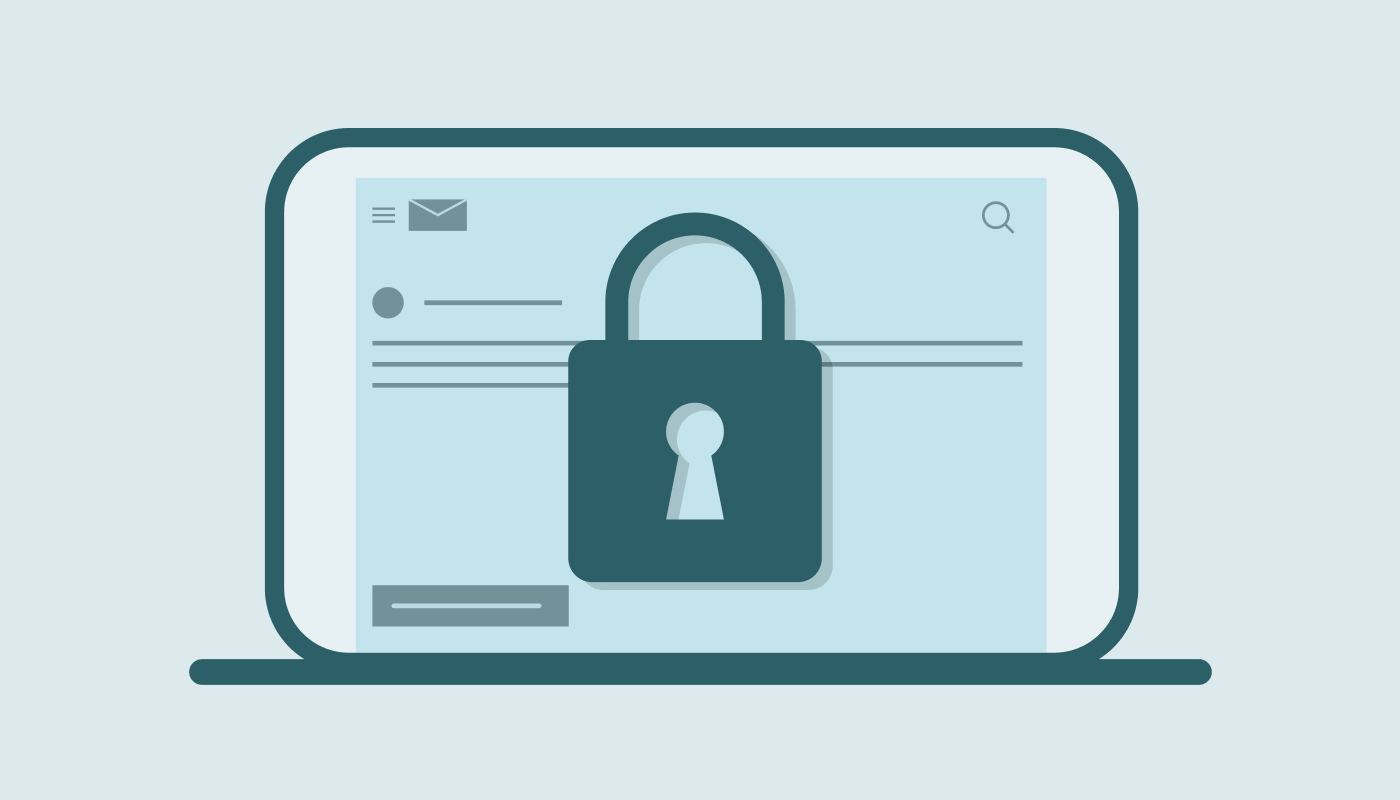
Incident Response Plan
Purpose
An incident response plan establishes a coordinated and effective approach to handling and responding to security incidents that may affect the confidentiality, integrity, or availability of a title company’s information systems, data, or operations. It also defines roles and responsibilities for incident management, established reporting mechanisms, and outlines protocols for documenting incidents for analysis and future prevention.
Scope
This plan applies to all employees, contractors, and stakeholders who have access to or are responsible for the title company's information systems and data.
Contents
An incident response plan should include protocols around the following:
Roles and responsibilities
Incident response team
An incident response team should be designated and composed of individuals with specific roles and responsibilities related to incident response. The incident response team should be responsible for overseeing and coordinating incident response activities.
Incident response coordinator
The incident response coordinator is responsible for overall coordination and management of the incident response process. They should oversee the incident response team, ensure timely response and resolution, and act as the primary point of contact for incident reporting.
IT security analysts
IT Security Analysts should be responsible for conducting investigations, analyzing incidents, and providing technical expertise in identifying the root cause, containing the incident, and restoring normal operations.
Communications lead
The Communications Lead should be responsible for managing internal and external communications during a security incident. They should coordinate communication efforts to stakeholders, including employees, clients, regulatory authorities, and law enforcement agencies, as necessary.
Legal counsel
Legal Counsel should provide guidance on legal and compliance matters related to the incident, including data breach notification requirements, liaising with law enforcement agencies, and managing potential legal actions.
Incident Detection and Reporting
Incident identification
Employees should be trained to identify and report any suspicious activities or security incidents promptly to the Incident Response Coordinator or designated contact.
Incident reporting channels
Establish and communicate multiple incident reporting channels, such as a dedicated incident response email address or hotline, to ensure incidents can be reported quickly and efficiently.
Communication and notification
Internal communication
Internal communication channels should be established to inform employees about the incident, provide updates on the incident response progress, and communicate any necessary actions or precautions.
External communication
The Communications Lead should coordinate external communication efforts, including notifying affected clients, regulatory authorities, and other relevant stakeholders in accordance with applicable laws and regulations.
Media and Public Relations
The Communications Lead should be responsible for managing media inquiries and public relations efforts, ensuring consistent and accurate messaging.
Planning and Maintenance
Plan testing
The Incident Response Plan should be regularly tested through tabletop exercises and simulated incident scenarios to evaluate its effectiveness and identify areas for improvement.
Plan maintenance
The Incident Response Plan should be reviewed and updated regularly to incorporate changes in technology, systems, personnel, or regulatory requirements. Changes and updates to the plan should be communicated to relevant stakeholders and employees.
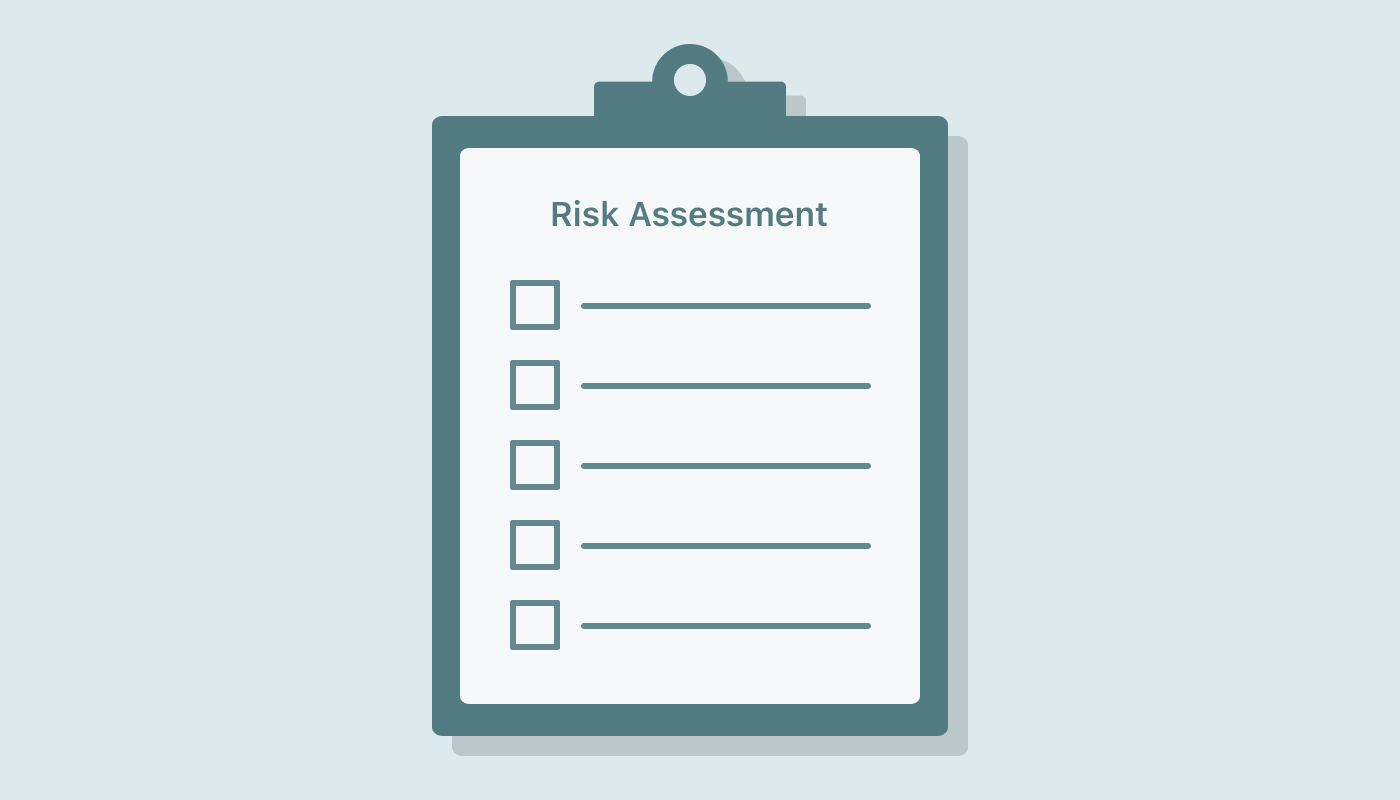
Disaster Recovery Plan
Purpose
A disaster recovery plan ensures the continuity of critical business operations and minimizes the impact of a disaster or disruptive event on the title company. It outlines the strategies, procedures, and resources required for the timely recovery and restoration of key systems, data, and processes.
Scope
This plan applies to all employees, contractors, and stakeholders who have responsibilities related to the recovery and restoration of the title company's systems, data, and operations.
Contents
A disaster recovery plan will typically include procedures around:
Risk Assessment
Conduct a thorough risk assessment to identify potential hazards and threats that could disrupt business operations. Consider both natural and man-made disasters, such as fires, floods, power outages, cyber-attacks, and equipment failures.
Business Impact Analysis
Perform a BIA to determine the potential impact of a disruptive event on critical business functions, systems, and processes. Identify recovery time objectives and recovery point objectives for each critical function.
Recovery Priorities
Define the order of recovery for critical business functions, systems, and processes based on their importance to the organization and the potential impact of their unavailability.
Alternate Site
Identify an alternate site or facility where critical operations can be resumed in the event of a disaster. Ensure the site has the necessary infrastructure, equipment, and resources to support business operations.
Data Backup and Recovery
Establish a robust data backup and recovery strategy to ensure the availability and integrity of critical data. Define backup schedules, retention periods, and procedures for offsite storage. Regularly test data restoration procedures to validate their effectiveness.
System and Application Recovery
Develop a plan for the recovery of essential systems and applications. Document the necessary steps, procedures, and configurations required to restore systems to a functional state.
Communication and Notification
Establish communication and notification protocols to keep employees, clients, and stakeholders informed during a disaster or disruptive event. Designate primary and alternate communication channels for internal and external communication.
Disaster Recovery Coordinator
Appoint a Disaster Recovery Coordinator who will be responsible for overseeing the implementation of the DRP, coordinating recovery efforts, and liaising with stakeholders and management.
Recovery Teams
Formulate recovery teams with assigned roles and responsibilities for executing recovery procedures. Roles may include IT recovery team, facilities team, communications team, and operations team.
Testing
Conduct regular testing and exercises of the DRP to validate its effectiveness and identify areas for improvement. Test the recovery procedures, communication protocols, and coordination between teams.
Plan Maintenance
Review and update the DRP regularly to reflect changes in systems, processes, personnel, or business requirements. Ensure that contact information, procedures, and recovery strategies are up-to-date.
Employee Training
Provide training to employees on their roles and responsibilities during a disaster or disruptive event. Conduct drills and simulations to familiarize employees with the DRP and their specific tasks.
Documentation and Accessibility
Ensure that the DRP is documented, readily accessible, and known to all relevant employees. Provide easy access to the DRP, including contact information, recovery procedures, and instructions.
Incident Response Procedures
Outline the procedures for activating the DRP in the event of a disaster or disruptive event. Define the roles and responsibilities of the Incident Response Team, including communication, initial assessment, and activation of recovery procedures.
Recovery Process
Detail the step-by-step recovery process, including system restoration, data recovery, testing, and verification of critical business functions. Provide clear instructions and timelines for each phase of the recovery process.
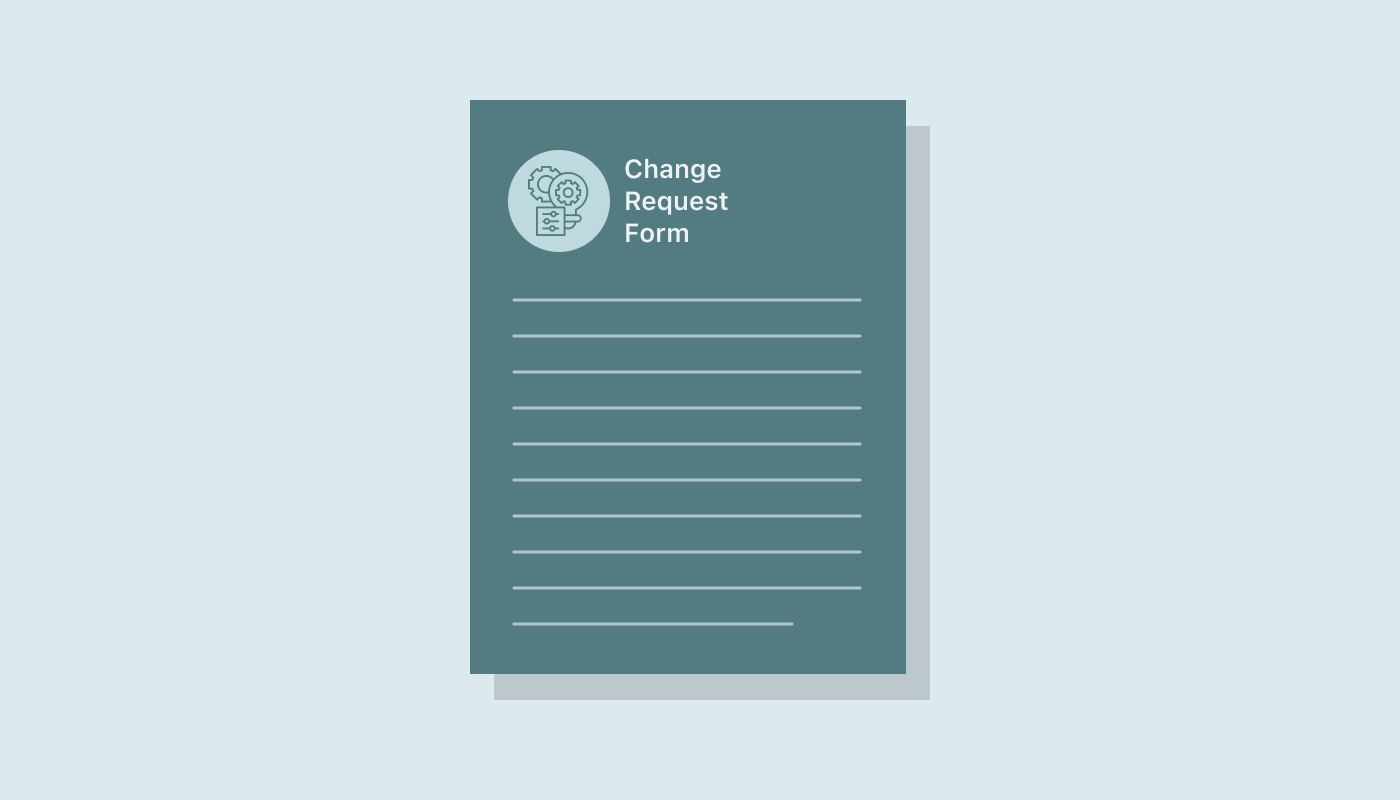
Change Management Policy
Purpose
A change management policy establishes processes to approve, implement, and record changes in information systems, processes, and infrastructure to maintain systems' integrity, stability, and security.
Scope
This policy applies to all employees, contractors, and stakeholders involved in initiating, evaluating, implementing, or approving changes to the title company's systems, processes, and infrastructure.
Contents
A change management policy should include protocols around the following:
Change Management Process
Change request
All changes must be submitted through a formal change request process.
Change identification
Identify the need for a change and document it in a Change Request form. Include details such as the nature of the change, its impact, and the expected benefits.
Change evaluation
Evaluate the change request to assess its feasibility, risks, and impact on business operations, security, and compliance. Consider factors such as resource requirements, potential conflicts with existing systems or processes, and any regulatory or legal implications.
Change approval
Obtain appropriate approval for the change request based on established criteria and designated approvers. Approval may be required from IT management, business stakeholders, or a designated Change Advisory Board (CAB).
Change planning
Once the change is approved, develop a detailed change plan that includes the necessary steps, resources, timelines, and contingencies. Document the change plan to ensure clear communication and understanding of the proposed changes.
Change implementation
Implement the approved change following the documented change plan. Adhere to any necessary testing, rollback, or validation procedures to ensure the integrity and stability of systems and processes.
Change review and closure
After the change is implemented, conduct a review to assess its success and ensure the desired outcomes are achieved. Document the results of the review and formally close the change request.
Roles and responsibilities
Change owner
The Change Owner is responsible for initiating the change request, providing necessary information, and coordinating the change process. They are accountable for ensuring the successful implementation of the change and its alignment with business objectives.
Change manager
The Change Manager oversees the entire change management process, including change evaluation, planning, coordination, and communication. They ensure that changes are executed in accordance with this policy and that appropriate approvals and documentation are obtained.
Change Advisory Board (CAB)
The Change Advisory Board comprises representatives from relevant departments or business units. The CAB reviews and approves changes based on their impact, risks, and alignment with business objectives. They provide guidance and recommendations for change implementation.
IT and Operations teams
The IT and Operations teams play a critical role in executing changes, conducting necessary testing, implementing changes in production environments, and ensuring minimal disruption to business operations.
Communication and documentation
Change communication
Effective communication is crucial throughout the change management process. Ensure that relevant stakeholders are kept informed of upcoming changes, their impact, and any necessary actions or precautions.
Change documentation
Maintain accurate and up-to-date documentation of all change requests, approvals, plans, implementation details, and reviews. This documentation should be readily accessible and include information that allows for traceability and accountability.
Training and awareness
Employee training
Provide training to employees involved in the change management process. Ensure that they understand their roles and responsibilities, as well as the policies and procedures related to change management.
Change management awareness
Promote awareness of the change management process throughout the organization. Conduct regular communication and training sessions to educate employees about the importance of change management and their role in ensuring its success.
Compliance and review
Compliance
All changes must comply with relevant legal, regulatory, and industry requirements. Ensure that changes are evaluated and implemented in a manner that maintains the integrity, security, and privacy of the title company's systems and data.
Policy Review
Regularly review and update this Change Management Policy to reflect changes in technology, industry best practices, or business requirements. Document any policy changes and communicate them to relevant stakeholders and employees.

Employee Awareness and Training Program
Purpose
An employee awareness and training program details how employees will be trained on information security best practices, policies, and procedures. The program aims to create a security-conscious culture, increase awareness of potential risks, and ensure employees understand their roles and responsibilities in maintaining information security.
Scope
This program applies to all employees, contractors, and stakeholders with access to the title company's systems, data, and facilities. It covers various topics related to information security, including data handling, password management, acceptable use of technology, and reporting security incidents.
Contents
An employee awareness and training program typically covers the following:
Security awareness training
Initial training
All new employees must receive comprehensive security awareness training during their onboarding process. This training should cover essential topics such as the importance of information security, common threats and risks, and basic security practices.
Ongoing training
Regularly provide refresher training sessions to reinforce knowledge and update employees on new threats, emerging trends, and changes in policies or procedures. Conduct these sessions at least annually or as deemed necessary based on changes in the information security landscape.
Policy and procedure training
Policy awareness
Ensure that all employees are aware of and understand the title company's information security policies and procedures. Provide training sessions or materials that clearly explain each policy, its purpose, and the expected behavior or actions of employees.
Policy updates
Regularly communicate updates or revisions to policies and procedures to employees. Conduct training sessions or provide informative materials to ensure that employees are aware of the changes and understand their implications.
Phishing and social engineering awareness
Training on phishing and social engineering
Educate employees about the risks associated with phishing emails, social engineering attacks, and other forms of cyber deception. Train them to recognize and report suspicious emails, phone calls, or other attempts to gain unauthorized access to sensitive information.
Data handling and privacy
Data classification and handling
Train employees on the classification of data based on sensitivity and importance. Provide guidelines on how to handle different types of data, including NPI, financial data, and confidential business information.
Privacy regulations
Ensure that employees are aware of applicable privacy regulations, such as GDPR or CCPA, and understand their responsibilities in protecting personal data. Provide specific guidance on data access, sharing, storage, and disposal to ensure compliance with these regulations.
Password and account security
Password best practices
Educate employees on strong password creation, regular password updates, and the importance of not sharing passwords or using the same password for multiple accounts. Provide tips on creating complex passwords and using password management tools.
Multi-Factor Authentication (MFA)
Train employees on the benefits and usage of MFA for accessing company systems or applications. Encourage employees to enable MFA for their accounts to enhance security.
Reporting security incidents
Incident reporting procedures
Clearly communicate the procedures for reporting security incidents, such as data breaches, suspicious activities, or lost/stolen devices. Train employees on the appropriate channels and contacts for reporting incidents promptly.
Whistleblower protection
Inform employees about whistleblower protections and emphasize the importance of reporting any security concerns or violations without fear of retaliation.
Communication and engagement
Regular communication
Maintain open and regular communication channels to keep employees informed about information security updates, emerging threats, and best practices. Utilize newsletters, emails, or internal messaging platforms to share relevant information.
Awareness campaigns
Organize awareness campaigns or events, such as security-themed contests, posters, or training sessions, to engage employees and reinforce key security messages. These campaigns can be designed to promote a fun and interactive learning environment.
Employee compliance
Regularly monitor and assess employee compliance with information security policies and procedures. Conduct audits, assessments, or spot-checks to ensure adherence to security practices and identify areas for improvement.
Training effectiveness
Measure the effectiveness of the training program through assessments, quizzes, or surveys to gauge employees' knowledge and understanding of information security topics. Use the results to refine and enhance the training program as needed.
Compliance and Review
Compliance
Ensure that the Employee Awareness and Training Program aligns with relevant legal, regulatory, and industry requirements. Regularly review and update the program to reflect changes in technology, security threats, or organizational needs.
Program Evaluation
Periodically evaluate the effectiveness of the Employee Awareness and Training Program through feedback from employees, incident reports, or security metrics. Use the evaluation results to make improvements and ensure the program remains relevant and impactful.
Security best practices to consider when creating a WISP
Risk Assessment
A risk assessment takes inventory of all company assets—employees, computers, servers, systems, vendors, etc.—and evaluates these assets against the company’s updated security policies.
Conducting a comprehensive risk assessment is a vital step in developing a robust WISP. This exercise helps identify and document potential risks and vulnerabilities to information security, assess their potential impact on operations, and prioritize them based on severity and likelihood. The results of this assessment help ensure that the appropriate security measures are implemented and resources are allocated effectively.
Compliance and Audit
- Title & escrow companies should write their WISP in a way that ensures compliance with relevant legal and regulatory requirements.
- Companies should regularly conduct security audits and assessments to evaluate the effectiveness of security controls and measures.
- Security practices should be continuously monitored and reviewed to stay ahead of emerging threats and maintain compliance.
Documentation and Review
- Title & escrow companies should maintain a central repository for security-related documentation, including their WISP.
- A title & escrow company’s WISP should be regularly reviewed and updated to reflect changes in technology, regulations, and the business environment.
- Any changes or revisions made to the plan should be documented
- Employees should receive appropriate training and be required to acknowledge their understanding of the policies and procedures
Conclusion
As technology continues to advance and cyber threats become more sophisticated, implementing robust security practices to protect NPI is critical across the title & escrow industry. A comprehensive WISP safeguards data, ensures regulatory compliance, minimizes risks, and fosters a security-conscious culture. Implementing a WISP ensures compliance with ALTA Best Practices Pillar 3 and demonstrates a commitment to ongoing information security practices and the safety of their clients' information.
Visit Qualia’s Trust Center to learn more about data security best practices. Visit The Trust Center
